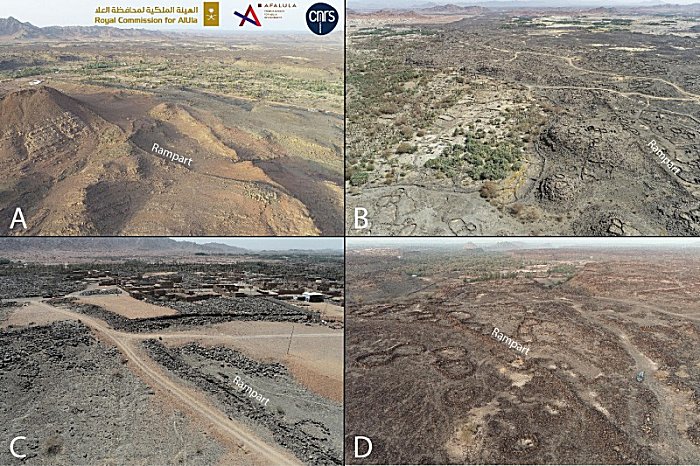Vast Fortification Enclosing Walled Oasis Dating Back 4,000 years In North-Western Arabia – Unearthed
Conny Waters - AncientPages.com - A vast fortification, which is one of the longest known going back 4,000 years was just discovered by a team of scientists from the CNRS1 and the Royal Commission for AlUla (RCU).
Location map of the Khaybar walled oasis (red and white circle) and other major sites in north-western Arabia, © G. Charloux, ESRI.
This new walled oasis is, along with that of Tayma, one of the two largest in Saudi Arabia. While a number of walled oases dating back to the Bronze Age had already been documented, this major discovery sheds new light on human occupation in north-western Arabia, and provides a better grasp of local social complexity during the pre-Islamic period.
The fortification is enclosing the ancient Khaybar Oasis, home to a wealth of plant and animal life.
The North Arabian Desert oases were inhabited by sedentary populations in the 4th and 3rd millennia BCE.
Digital reconstruction of the rampart network from the northern section of the Khaybar walled oasis 4,000 years ago. Credit: Khaybar Longue Durée Archaeological Project, M. Bussy & G. Charloux
Cross-referencing field surveys and remote sensing data with architectural studies, the team estimated the original dimensions of the fortifications at 14.5 kilometres in length, between 1.70 and 2.40 metres in thickness, and approximately 5 metres in height.
Preserved today over a little less than half of its original length (41%, 5.9 km and 74 bastions), this colossal edifice enclosed a rural and sedentary territory of nearly 1,100 hectares.
The fortification’s date of construction is estimated between 2250 and 1950 BCE, on the basis of radiocarbon dating of samples collected during excavations.
While the study confirms that the Khaybar Oasis clearly belonged to a network of walled oases in north-western Arabia, the discovery of this rampart also raises questions regarding why it was built as well as the nature of the populations that built it, in particular their relations with populations outside the oasis.
This archaeological discovery, whose results will be published on 10 January in the Journal of Archaeological Science: Reports (JASREP), paves the way for major advances in understanding the prehistoric, pre-Islamic, and Islamic past of the north-western Arabian Peninsula.
Paper: Journal of Archaeological Science : Reports, January 10, 2024.
DOI : https://doi.org/10.1016/j.jasrep.2023.104355
Provided by CNRS
Written by Conny Waters - AncientPages.com Staff Writer
More From Ancient Pages
-
 Rare Medieval Chess Piece And Game Collection Unearthed At A Forgotten Castle
Archaeology | Jun 7, 2024
Rare Medieval Chess Piece And Game Collection Unearthed At A Forgotten Castle
Archaeology | Jun 7, 2024 -
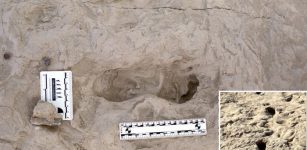 1.5-Million-Year-Old Footprints Of Two Different Species Of Human Ancestors Found At The Same Spot
Human Beginnings | Nov 29, 2024
1.5-Million-Year-Old Footprints Of Two Different Species Of Human Ancestors Found At The Same Spot
Human Beginnings | Nov 29, 2024 -
 First Genetic Map Of People Of Ireland Is Presented By Irish, British And American Researchers
Archaeology | Dec 15, 2017
First Genetic Map Of People Of Ireland Is Presented By Irish, British And American Researchers
Archaeology | Dec 15, 2017 -
 Hidden Rare Map Reveals How American “Hero” William Clark Broke Peacy Treaty And Robbed Indigenous Americans Of Land
Archaeology | Feb 7, 2022
Hidden Rare Map Reveals How American “Hero” William Clark Broke Peacy Treaty And Robbed Indigenous Americans Of Land
Archaeology | Feb 7, 2022 -
 1,300-Year-Old Mayan Maize God Sculpture Found in Palenque, Mexico
Archaeology | Jun 2, 2022
1,300-Year-Old Mayan Maize God Sculpture Found in Palenque, Mexico
Archaeology | Jun 2, 2022 -
 Carved Symbols Related To The Galician Castro Culture Discovered At Castro de San Vicenzo, Orense, Spain
Archaeology | Oct 11, 2024
Carved Symbols Related To The Galician Castro Culture Discovered At Castro de San Vicenzo, Orense, Spain
Archaeology | Oct 11, 2024 -
 The Maya Produced Rubber 3,000 Years Before Goodyear
Ancient History Facts | Mar 12, 2016
The Maya Produced Rubber 3,000 Years Before Goodyear
Ancient History Facts | Mar 12, 2016 -
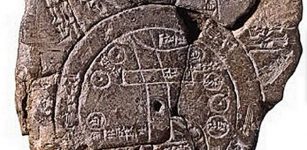 Imago Mundi: Famous Babylonian World Map Is The Earliest Known In The World
Artifacts | Sep 10, 2015
Imago Mundi: Famous Babylonian World Map Is The Earliest Known In The World
Artifacts | Sep 10, 2015 -
 Dangerous Magnetic Anomaly And Unexplained Events In Mysterious And Dark Valley Trouble Scientists – Why Must The Stone Gate Not Be Crossed?
Featured Stories | Nov 7, 2024
Dangerous Magnetic Anomaly And Unexplained Events In Mysterious And Dark Valley Trouble Scientists – Why Must The Stone Gate Not Be Crossed?
Featured Stories | Nov 7, 2024 -
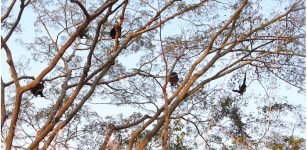 Early Humans May Have First Walked Upright In The Trees 7 Million Years Ago
Human Beginnings | Dec 17, 2022
Early Humans May Have First Walked Upright In The Trees 7 Million Years Ago
Human Beginnings | Dec 17, 2022 -
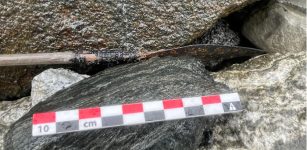 Arrow Pre-Dating The Vikings Discovered After Being Lost In The Ice For 1,500 Years
Archaeology | Aug 25, 2022
Arrow Pre-Dating The Vikings Discovered After Being Lost In The Ice For 1,500 Years
Archaeology | Aug 25, 2022 -
 Long-Lost Roman Bridge Re-Discovered In Chepstow River Wye Mud, UK
Archaeology | Aug 12, 2023
Long-Lost Roman Bridge Re-Discovered In Chepstow River Wye Mud, UK
Archaeology | Aug 12, 2023 -
 Massive 2nd-Century Fountain In Turkey’s Ancient City Of Tripolis Will Be Soon Restored
Archaeology | Aug 3, 2020
Massive 2nd-Century Fountain In Turkey’s Ancient City Of Tripolis Will Be Soon Restored
Archaeology | Aug 3, 2020 -
 On This Day In History: George Bernard Shaw Died – On Nov 2, 1950
News | Nov 2, 2016
On This Day In History: George Bernard Shaw Died – On Nov 2, 1950
News | Nov 2, 2016 -
 Ancient Inscriptions Of Babylonian King Nabonidus Discovered In Saudi Arabia
Archaeology | Jul 14, 2021
Ancient Inscriptions Of Babylonian King Nabonidus Discovered In Saudi Arabia
Archaeology | Jul 14, 2021 -
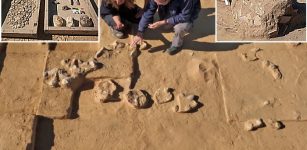 Ostrich Eggs Dated More Than 4,000 Years Discovered In Negev Desert Of Southern Israel
Archaeology | Jan 13, 2023
Ostrich Eggs Dated More Than 4,000 Years Discovered In Negev Desert Of Southern Israel
Archaeology | Jan 13, 2023 -
 Food In Ancient Roman Funerary Meals Was Similar To That Consumed During Life
Archaeology | Aug 30, 2022
Food In Ancient Roman Funerary Meals Was Similar To That Consumed During Life
Archaeology | Aug 30, 2022 -
 Mysterious Maya Snake Kings And Their Powerful Kingdom In The Jungle Reveal More Ancient Secrets
Civilizations | Apr 23, 2018
Mysterious Maya Snake Kings And Their Powerful Kingdom In The Jungle Reveal More Ancient Secrets
Civilizations | Apr 23, 2018 -
 Geological Mystery Of The Lost Continent Argoland Solved
Earth Changes | Oct 26, 2023
Geological Mystery Of The Lost Continent Argoland Solved
Earth Changes | Oct 26, 2023 -
 Fashion Police Enforced Gender Norms In Early Modern Genoa
Social Sciences | Dec 11, 2024
Fashion Police Enforced Gender Norms In Early Modern Genoa
Social Sciences | Dec 11, 2024

